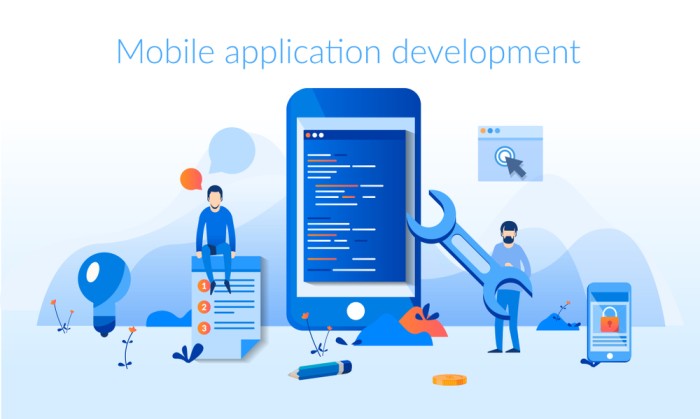If you’re selling online, it’s crucial to have a mobile app and an e-commerce website—that’s the new way of doing business in 2017. You need to make sure your customers can find you on their phones and tablets—because they probably will! In this article, we share some tips on how to manage your e-commerce store better on mobile devices and apps.
A mobile app is an important tool for every e-commerce business, but it isn’t a one-size-fits-all kind of product. In fact, the average cost of an e-commerce app is $8,500! And though you can pay that much to your app developer, the truth is that you can get the same value with some DIY tips and tricks by learning how to build your own e-commerce app from scratch. If you want to learn more about creating your own e-commerce mobile apps, this article has 10 tips to help you on your way.
-
Be Ready To Answer Questions on Your E-Commerce App
Developing an e-commerce app can be a strategic way for you to differentiate your business from competitors. But before you dive in, make sure you have answers for some basic questions about your e-commerce app, like: How does it fit into your marketing strategy? Will it be available across all mobile devices? Do you already have a plan in place for customer support and updates? If not, think about how your mobile app development team will handle these responsibilities.
Talk with them early on to find out what kind of budget they’ll need and whether or not they’ll need dedicated QA (quality assurance) testing teams. And if you plan to charge consumers directly through the app, be prepared to comply with applicable credit card regulations.
-
Include a Customer Service Chat Feature
By adding a customer service chat feature to your e-commerce app, you’ll provide a better experience for customers who have questions about their orders.
They’ll be able to easily get in touch with you from anywhere and can avoid making an extra phone call or email. Plus, they won’t have to worry about getting stuck in an endless loop of automated messaging.
Give them access to a real person and they’ll appreciate it. Plus, it will help improve your overall customer service ratings, which is something every business owner wants when trying to grow their company into one that generates recurring revenue.
-
Improve Your Mobile Website
First and foremost, you need a mobile website. If you’re trying to sell anything online, it needs to be easily accessible from a mobile device. As we all know, smartphones are becoming increasingly popular—and consumers are using them more than ever before.
This means that if your site isn’t mobile-friendly, it’s going to make sales harder than they need to be. With an e-commerce app for Android or iOS, however, even if your users can’t access your site via a computer, they can still browse and purchase on their phones.
-
Add Offline Payment Options
Many e-commerce stores are starting to add offline payment options, like in-store pickup or local pickup. This is a big move toward making online stores more user-friendly and convenient for shoppers. By adding a simple click and collect button with real location information, your customers have an even easier way of purchasing your products.
From there, all they have to do is print out their order form, drop off their items at your store when it’s convenient for them and they’re done! They save time by not having to wait around at home for their package and you increase sales by meeting customer needs more efficiently. (Simply Measured)
-
Create Personalized Promotions
Personalized promotions are key in strengthening customer relationships with your brand. Knowing what your customers want and how they like to be marketed to helps shape future marketing strategies. By giving customers exactly what they want, you’ll have a large impact on their loyalty and willingness to come back for more.
Promotions can take many forms—including coupons, email campaigns, and special discounts—but by creating one that is personalized for each customer, you can better tailor which deals resonate with them most.
This will save both you and your customer’s time in reaching deals that are truly valuable. To develop a truly successful mobile app promotion strategy, it’s important to focus not only on growth but also retention of new users.
-
Track the Right Metrics
You’ve launched a killer mobile app. Now it’s time to see how it performs. While there are many metrics and data points you should be monitoring, here are three key metrics every e-commerce store owner should know: session rate, average order value and repeat rate. Keeping an eye on these metrics will allow you to assess how customers interact with your website or app and make changes as needed.
-
Use More Visuals for Better UX
The key benefits of having a mobile app for your ecommerce business are pretty obvious: more customers, higher conversion rates, and more sales.
The problem is that in an already oversaturated market (there are more than 1 million apps available in Google Play and Apple’s App Store), it’s not easy to stand out from the crowd without investing tons of time and money. On top of that, successful apps have experienced tremendous growth; however, keep in mind that only 4% of all downloaded apps get used after just one month!
-
Offer Customer Support within the App
According to Javelin Strategy & Research, mobile e-commerce sales will reach $719 billion by 2020, making up 33% of all online sales. However. If you’re not offering customer support within your app. You’re missing out on one of your biggest opportunities for driving revenue.
Once an item is purchased through your app, communicate with customers directly and offer support right there and then. If a problem arises or they want to return something they don’t like or they just have a question. About their purchase—let them chat with you right there in your mobile app! This way, you can address issues immediately and give customers answers faster.
The Final Word
It’s no secret that mobile is taking over online sales. In fact, it’s predicted that by 2020 about three quarters of all e-commerce will be completed via mobile devices. There are plenty of opportunities for you to capture some of those sales. But in order to do so you need a solid mobile app that fits your brand.
Mobile app development isn’t necessarily cheap, but it can absolutely pay off—which is why you should put at least some time and thought into how you can integrate one into your business. After all. A the good app lets shoppers interact with your store and purchase items without needing to even open their browser.
Hope this article helps you know eight important steps to better manage your e-commerce store on mobile. Share your thoughts in the comment section below.

